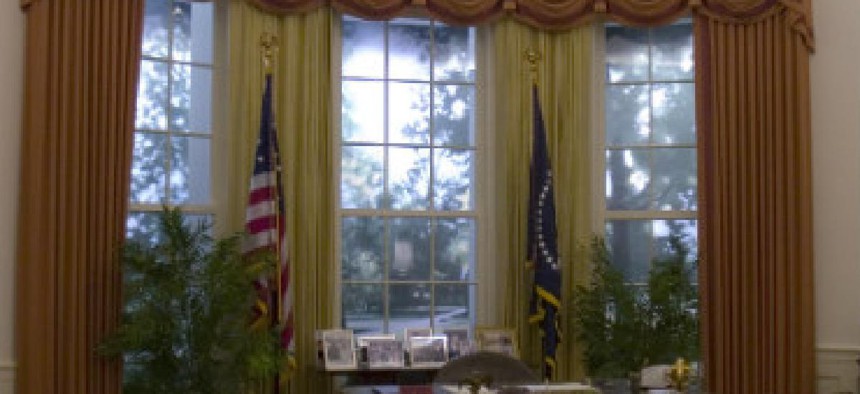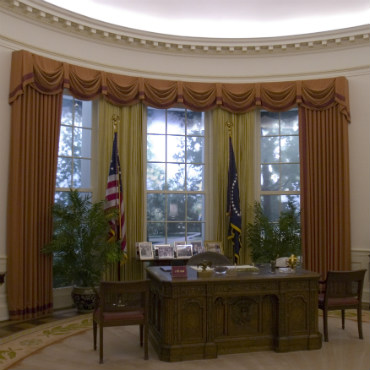Time to measure the White House drapes for the next occupant

A new center to support the presidential transition officially launched Jan. 20, a year ahead of the next inauguration.

One year before the swearing in of the 45th president of the United States, the preparations for that event got a new home: the Partnership for Public Service's Center for Presidential Transition.
In the Jan. 20 launch ceremony for the center, Joshua Bolten, former chief of staff for President George W. Bush, and Thomas McLarty, who held the same position under President Bill Clinton, discussed the pitfalls and opportunities for the next occupant of the White House.
The center is meant to be a one-stop shop for presidential transition work, the kind of place that McLarty said didn't exist but would have been nice to have during previous transitions. The center will be around for 2017 thanks to technology advancements and the work of the partnership and other organizations.
"I think technology is our friend here," McLarty said.
One tech-enabled goal of the center is to streamline the vetting process for nominees to fill presidential appointments.
Center officials want to help the next president fill 400 appointments before August 2017 by preparing people in advance of the election and reducing nominees' paperwork burden from Senate committees and the president's team.
McLarty and Bolten's discussion at the launch event touched on data security, which is a must as campaigns seek to protect sensitive information, including nominees' names, even as they work with the center to prepare for possibly entering the White House. But they also emphasized the human element of transitions.
One big goal of the center is to detoxify, as Bolten put it, the appearance of a political candidate "measuring the drapes" before the election has been decided. Transition leaders have argued that it's crucial for campaigns to be well prepared to take power, and voters should not view preparatory work as hubris.
On the GOP side, negative perceptions about government institutions might keep candidates from using the center to its fullest, Bolten said.
"Ignorance of the traditional levers of government -- and contempt for those with experience using it -- seems to be an advantage in the Republican primary these days," he said. "I am concerned, at least in my own party, that 'measuring the drapes' will still be a political liability, and that some of the campaigns...feel that it's their responsibility to remain as ignorant as possible."
In its launch announcement, the center recommended that campaigns select transition leaders by the first week of April, establish transition offices by May and assemble a short list of top-level appointees.
Among the recommendations: "Once elected, the next president should have the White House staff and top 100 agency leaders in place immediately after Inauguration Day."
In addition to Bolten and McLarty, the members of the center's advisory board are Clay Johnson, who was executive director of the Bush-Cheney transition team; Ted Kaufman, who was an adviser to the Obama-Biden transition team; Michael Leavitt, former chairman of the Romney Readiness Project; and Donna Shalala, former secretary of the Department of Health and Human Services.
Whether they choose to use it or not, the center will be available to the many campaigns still crowding the 2016 race. Thanks to a 2010 law, so will the General Services Administration, just as soon as the parties’ nominating conventions take place.


